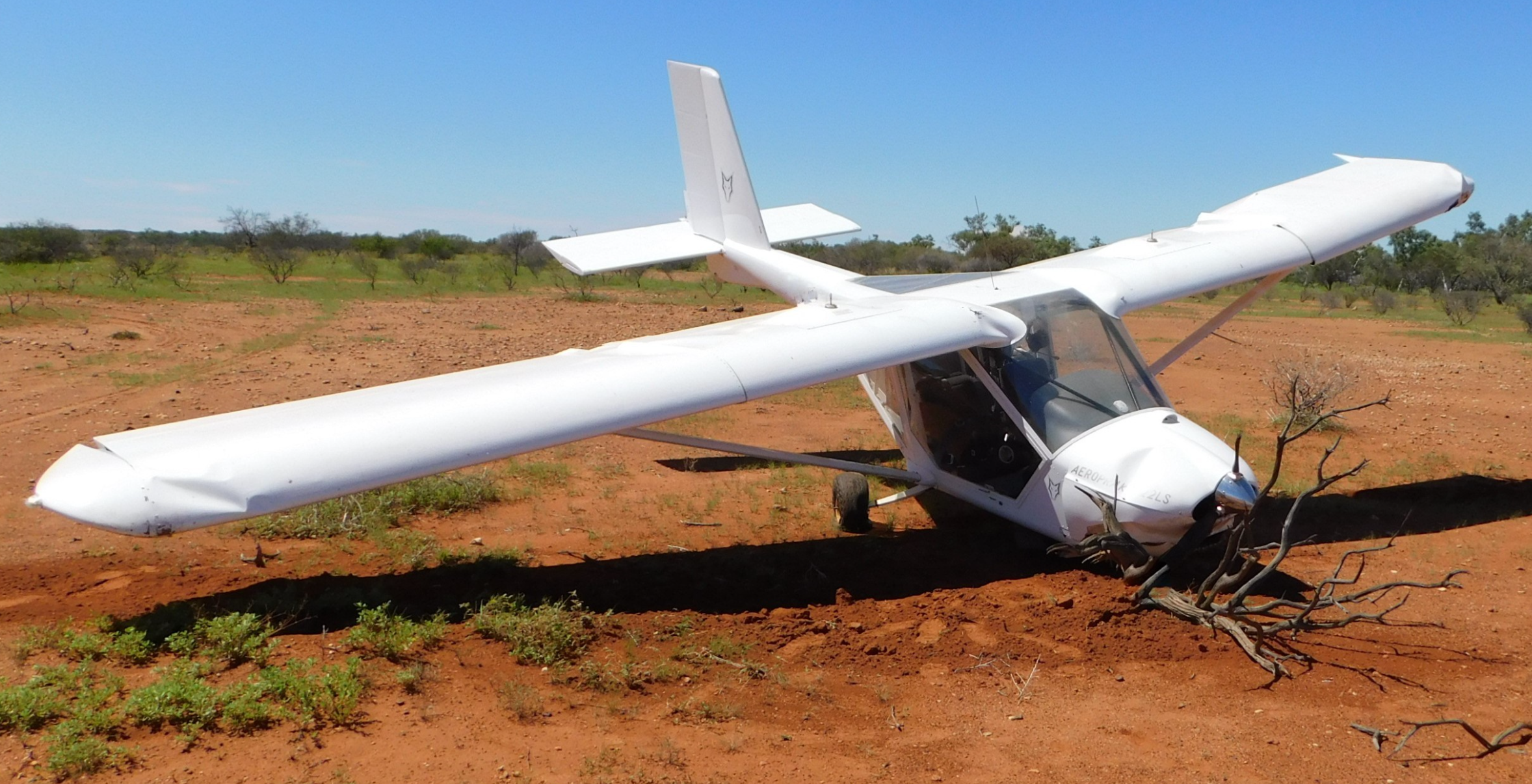| Occurrence Briefs are concise reports that detail the facts surrounding a transport safety occurrence, as received in the initial notification and any follow-up enquiries. They provide an opportunity to share safety messages in the absence of an investigation. |
What happened
On 25 February 2018, an Aeroprakt A22LS Foxbat departed a station on a flight to observe local floodwaters. At the time of departure, the dirt runway was wet and covered in part by standing water. On return from the local flight, the pilot attempted to land the aircraft on a part of the runway without standing water as close to the station as possible. The aircraft was configured with half-flap on approach and bounced on landing while negotiating the short length. Before applying power to go around, the aircraft impacted heavily on the nosewheel. The aircraft climbed out and the pilot reversed the direction of landing, in order to have greater runway available without standing water when he attempted a second landing. There was no wind at the time.
On touchdown the pilot noticed that the rudder pedals were locked and little control authority was evident. During the ground roll, the aircraft began to veer to the right towards a drum marking the edge of the runway. The pilot increased power with the intention to gain height and avoid the obstacle, and then to climb away so as to ascertain the nature of the control difficulty at a safe height.
The increase in power and upwards pitching movement of the aircraft with a groundspeed below 20 kts increased slipstream[1], torque[2] and gyroscopic effect[3] at a critical phase of flight. The resultant forces rolled the aircraft to the left which could not be corrected with control input before the left wing contacted the ground. The right main undercarriage subsequently impacted a large rock, causing the aircraft to ground loop[4] and to sustain substantial structural damage (Figure 1)
The pilot sustained minor injuries including bruising and neck pain but was unable to seek immediate medical attention due to the station being isolated by floodwaters.
Figure 1: A22LS Foxbat post-impact

Source: Aircraft owner
Initial post-flight investigation revealed a suspected cause: a soft water bottle, previously unrestrained on the passenger seat, had lodged under the rudder pedals on the passenger side and hidden from view. Further inspection by the owner the next day revealed that the soft water bottle could not have been the cause. The bottle was trial-fitted under the rudder pedals and rudder movement was established. The pilot reported that the water bottle had most likely lodged under the pedals during the resultant accident sequence.
The pilot identified that the most likely cause of the rudder control difficulty may have come from damage sustained to the nosewheel on the first landing. The A22LS Foxbat has rudder pedal controls that are linked by a series of connecting rods to the nosewheel in order to provide easy steerage on the ground. Damage to the nosewheel assembly may have restricted rudder control input during the second landing.
Safety message
Pilots are reminded that operations from unprepared runways can be hazardous. Particular care should be given to ensure sufficient take-off and landing distance is available to effect safe operation without distraction, especially when hazards exist.
Understanding the low-speed reaction of a particular aircraft in go-around situations is also of particular importance. Safe buffers between take-off safety speed[5] and rotation for take-off should be maintained in all normal and emergency situations. Accepting a low consequence runway excursion may be preferable to a high consequence loss of control and collision with terrain event.
Pilots and passengers are reminded of the hazard of loose objects in the cockpit, before or during flight. Not only can loose objects distract pilots during critical phases of flight, but they may also lodge in control systems, physically impact pilots and passengers, or create a fire hazard if inappropriately stored.
Pilots should routinely assess environmental and other possible external hazards prior to flight in order to fully understand the risks that may be encountered during the operation.
About this report
Decisions regarding whether to conduct an investigation, and the scope of an investigation, are based on many factors, including the level of safety benefit likely to be obtained from an investigation. For this occurrence, no investigation has been conducted and the ATSB did not verify the accuracy of the information. A brief description has been written using information supplied in the notification and any follow-up information in order to produce a short summary report, and allow for greater industry awareness of potential safety issues and possible safety actions.
__________
- Spiralling airflow from the propeller that strikes the side of the vertical fin, most pronounced at high power settings.
- Rotational reaction opposite to the direction of rotation of the propeller, most pronounced at high power settings.
- Rotational reaction acting in the yaw axis during a pitch change, due to rotation of the propeller.
- The aircraft enters a rapid rotation on the ground and spins until it comes to rest.
- A speed which provides adequate control of the aircraft for flight, normally greater than 1.2 times the aircraft stall speed.


